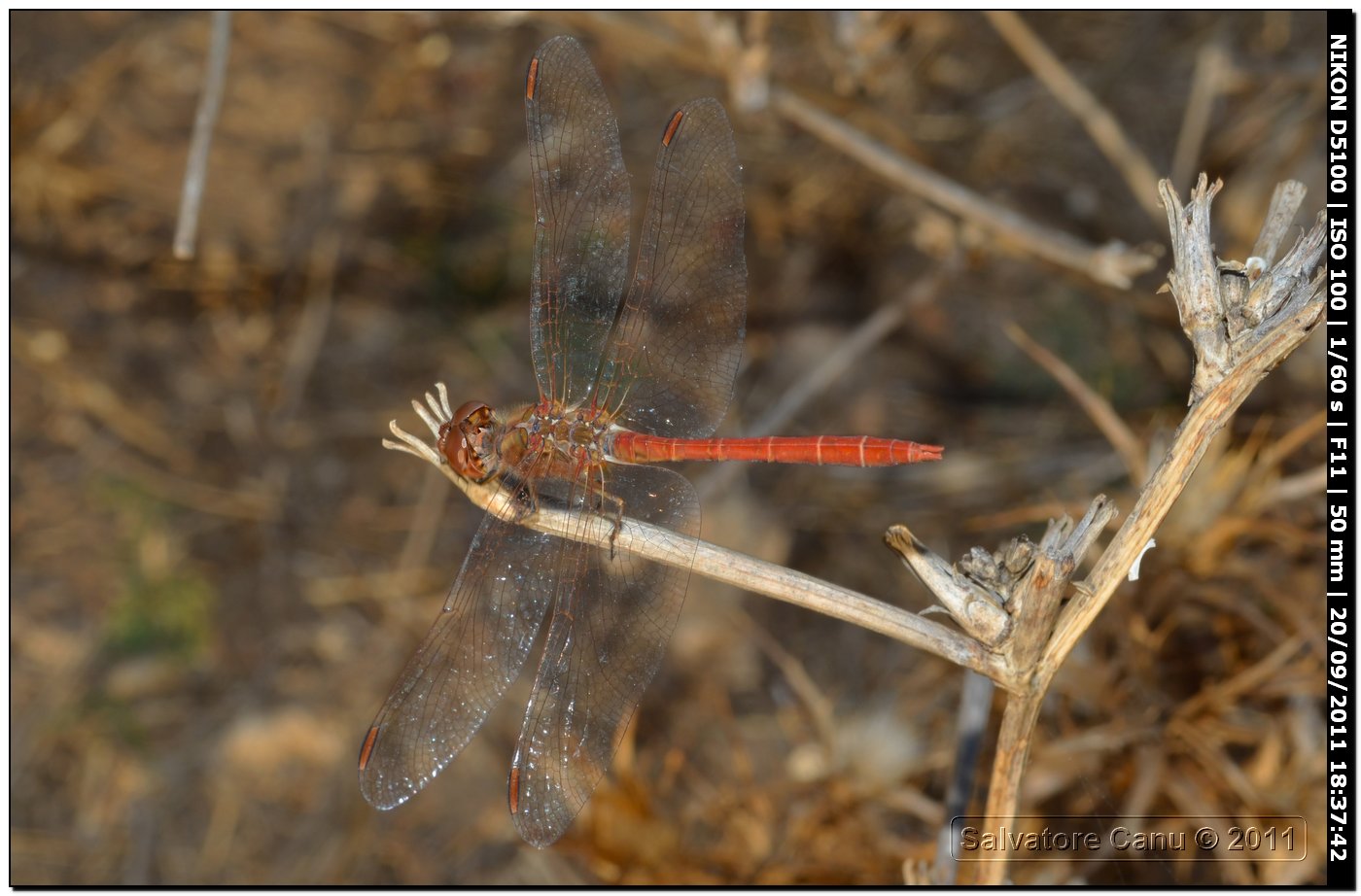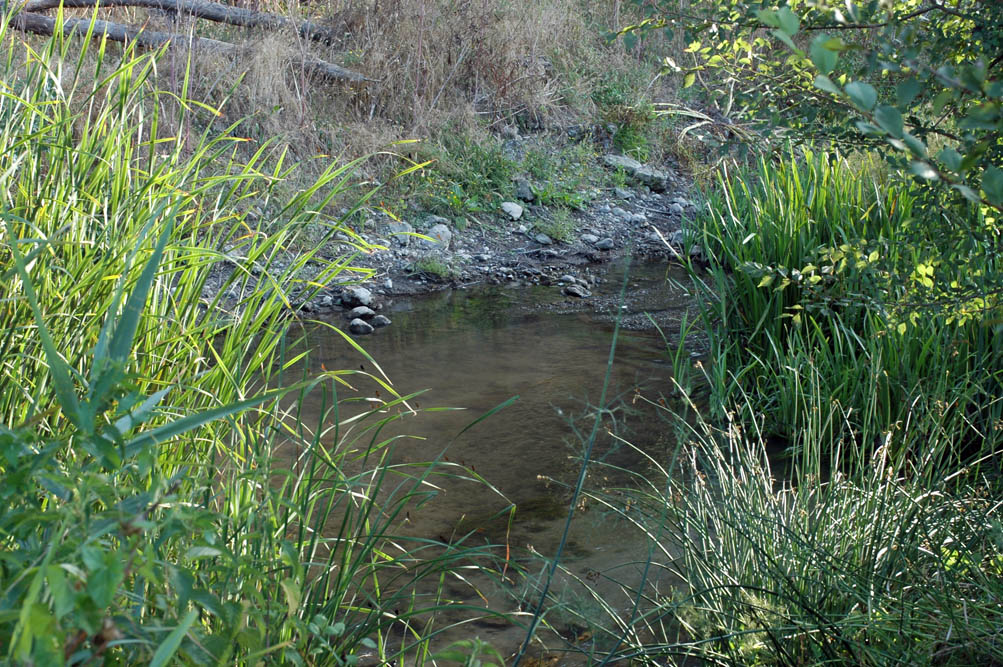Südliche Heidelibelle
© Salvatore Canu & Luigi Lenzini (Foto) & Clemens M. Brandstetter (Text)
 (from Boudot & al. 2009:209): it mainly reproduces in shallow, often temporary waters. It is common across large parts of the Mediterranean.
(from Boudot & al. 2009:209): it mainly reproduces in shallow, often temporary waters. It is common across large parts of the Mediterranean.
 Società italiana per lo studio e la conservazione delle libellule.
Società italiana per lo studio e la conservazione delle libellule.
Die Südliche Heidelibelle, Sympetrum meridionale (Selys-Longchamps 1841), hat ihre Heimat im Mittelmeergebiet (Nordafrika, Lampedusa – nach Corso (2012)), ostwärts bis in die Mongolei und das südliche Sibirien; Schröter (2010) meldet die Art aus Kirgisistan; in warmen Sommern kann sie aber auch in Süddeutschland beobachtet werden. Sie bevorzugt sonnenbeschienene stehende Gewässer mit reichlich Vegetation; in Italien wurde die Art bis 1.800 Meter beobachtet. De Knijf & Demolder (2013) berichten als erste, dass die Art in Kreta offensichtlich überwintern kann. Die Männchen sind bräunlich mit einem Rotstich; auf dem Abdomen befindet sich eine feine schwarze Linie; die Beine sind aussen braun-rötlich, innen grau. Die Tiere sind oft mit Milben parasitiert – siehe dazu Münchberg (1965).

Männchen der Südlichen Heidelibelle aus Usini, Prov. Sassari, Sardinien. Selys-Longchamps beschrieb die Art aus Sardinien, es handelt sich somit bei dem abgebildeten Exemplar um einen Topotypus.

Biotopbeispiel: Usini, Prov. Sassari, Sardinien.
Paarung auf dem Sand von Porto Liscia (Santa Teresa Gallura) , Prov. Olbia Tempio, Sardinien.
Literatur:
Boudot J.-P., V. J. Kalkman, M. Amorín, T. Bogdanović, A. Rivera,G. Degabriele, J.L. Dommanget, S. Ferreira, B. Garrigós, M. Jović, M. Kotarac, W. Lopau, M. Marinov, N. Mihoković, E. Riservato, B. Samraoui & W. Schneider 2009: Atlas of the Odonata of the Mediterranean and North Africa. – Libellula Supplement 9:1-256.
Corso, A., Janni, O., Pavesi, M., Sammut, M., Sciberras, A. & Vigano, M. 2012: Annotated checklist of the dragonflies (Insecta Odonata) of the islands of the Sicilian Channel, including the first records of Sympetrum sinaiticum Dumont, 1977 and Pantala flavescens (Fabricius, 1798) for Italy. – Biodiversity Journal, 2012, 3 (4): 459-478.
De Knijf G. & H. Demolder 2013: Early spring observations of Odonata from Cyprus. – Libellula 32: 59-74.
Münchberg P. 1965: Nochmals zum Flügelparasitismus der Larven von Arrenurus (A.) papillator (O. F. Müll.) (Acari, Hydrachnellae) bei Sympetrum meridionale Selys und S. Fonscolombei Selys (Odonata). — Z. f. Parasitenk. 25 (1965), 375—386.
Schröter A. 2010: The Odonata of Kyrgyzstan, part I – Critical national checklist, annotated list of records and collected data of the summer half-years 2008 and 2009. – International Dragonfly Fund – Report 28 (2010): 1-72.
Selys-Longchamps E. 1841: Novelles Libellulidées d’Europe. – Revue Zool. 4:243-246.
